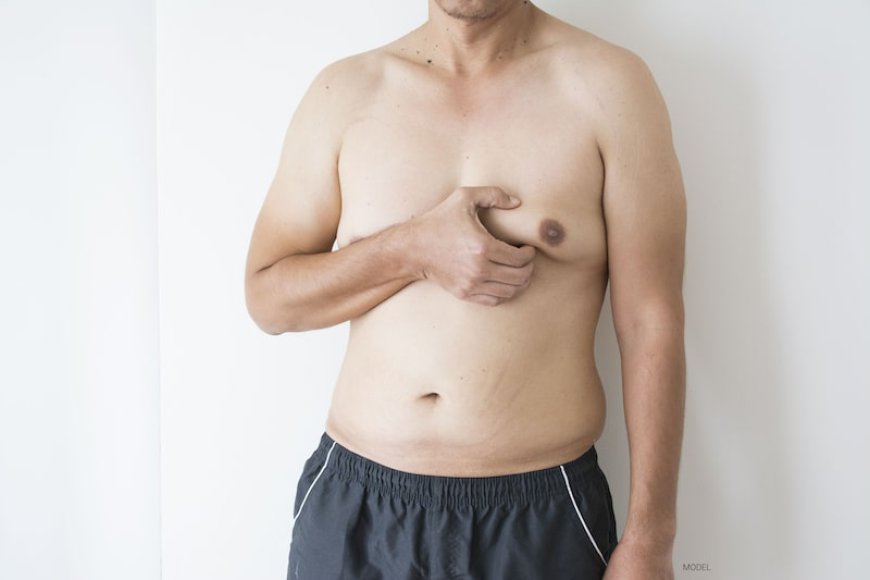Gynecomastia Myths: What Everyone Gets Wrong
Gynecomastia is a condition characterized by the enlargement of breast tissue in men, often leading to physical discomfort and emotional distress.

Gynecomastia, the enlargement of breast tissue in males, is a condition that affects a significant number of men at various stages of life. Despite its prevalence, there are many misconceptions surrounding gynecomastia that can lead to confusion, stigma, and misinformation. Understanding the facts about gynecomastia is crucial for those affected by the condition and for those who wish to support them. In this article, we will debunk some of the most common myths about Gynecomastia Dubai, providing clarity and insight into this often-misunderstood condition.
Myth 1: Gynecomastia Only Affects Overweight Men
The Reality
One of the most pervasive myths about gynecomastia is that it only occurs in overweight or obese men. While excess body fat can contribute to the appearance of enlarged breasts, gynecomastia can affect men of all body types, including those who are lean or athletic.
Understanding the Causes
Gynecomastia is primarily caused by an imbalance between testosterone and estrogen levels in the body. Factors that can lead to this hormonal imbalance include:
- Puberty: Hormonal changes during puberty can lead to temporary gynecomastia in adolescent boys, regardless of their weight.
- Aging: As men age, testosterone levels naturally decline, which can lead to an increase in breast tissue.
- Medications: Certain medications, such as anti-androgens, anabolic steroids, and some antidepressants, can cause gynecomastia as a side effect.
- Health Conditions: Conditions such as liver disease, kidney disease, hyperthyroidism, and tumors affecting hormone levels can also contribute to gynecomastia.
Myth 2: Gynecomastia is Just Fat
The Reality
Another common misconception is that gynecomastia is simply a result of excess fat in the chest area. While excess fat can contribute to the appearance of enlarged breasts, gynecomastia specifically refers to the enlargement of glandular breast tissue, not just fat accumulation.
Differentiating Between Conditions
It’s essential to differentiate between gynecomastia and pseudogynecomastia. Pseudogynecomastia occurs when there is an accumulation of fat in the breast area without the presence of glandular tissue. This condition is often associated with obesity and can be addressed through weight loss and lifestyle changes. In contrast, gynecomastia involves the actual growth of breast tissue and may require surgical intervention for correction.
Myth 3: Gynecomastia is a Rare Condition
The Reality
Many people believe that gynecomastia is a rare condition, but this is far from the truth. Studies suggest that gynecomastia affects approximately 30% to 70% of men at some point in their lives, particularly during puberty and middle age.
Prevalence Across Age Groups
- Adolescents: Gynecomastia is most common during puberty, affecting a significant percentage of boys as their bodies undergo hormonal changes. In many cases, this condition resolves on its own as hormone levels stabilize.
- Adult Men: Gynecomastia can also occur in adult men, particularly those in their 50s and 60s, due to age-related hormonal changes.
Myth 4: Gynecomastia is Only a Cosmetic Issue
The Reality
While gynecomastia can certainly affect a man's appearance and self-esteem, it is not merely a cosmetic issue. The condition can have significant psychological and emotional impacts on those affected.
Psychological Effects
Men with gynecomastia may experience:
- Low Self-Esteem: The condition can lead to feelings of embarrassment and self-consciousness, affecting social interactions and relationships.
- Anxiety and Depression: Many men report experiencing anxiety and depression related to their body image and the stigma associated with gynecomastia.
- Avoidance of Activities: Some men may avoid activities such as swimming or going to the gym due to embarrassment about their condition.
Conclusion
Gynecomastia is not just a cosmetic concern; it can have profound psychological effects on those affected. Recognizing the emotional impact of the condition is essential for providing support and understanding.

 Royalclinic34
Royalclinic34